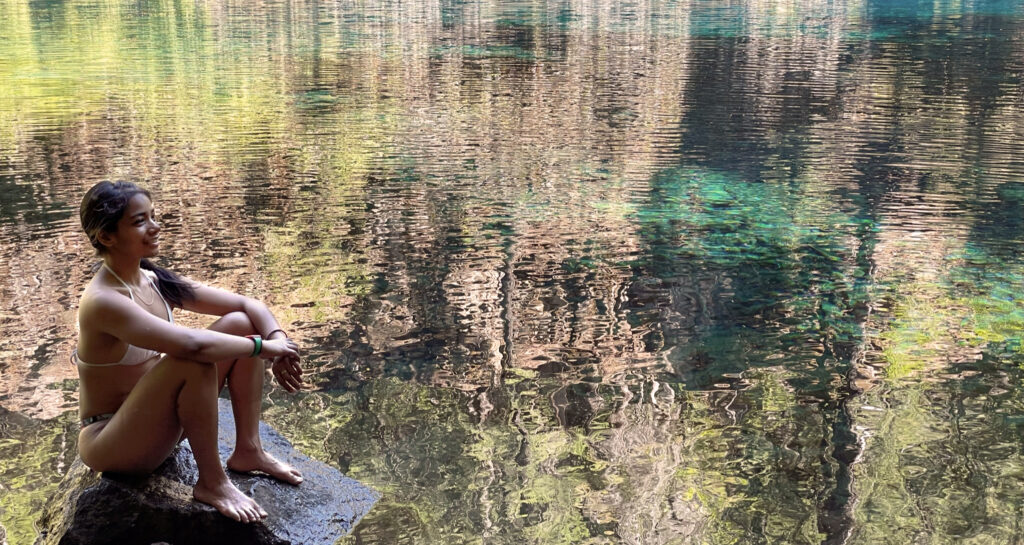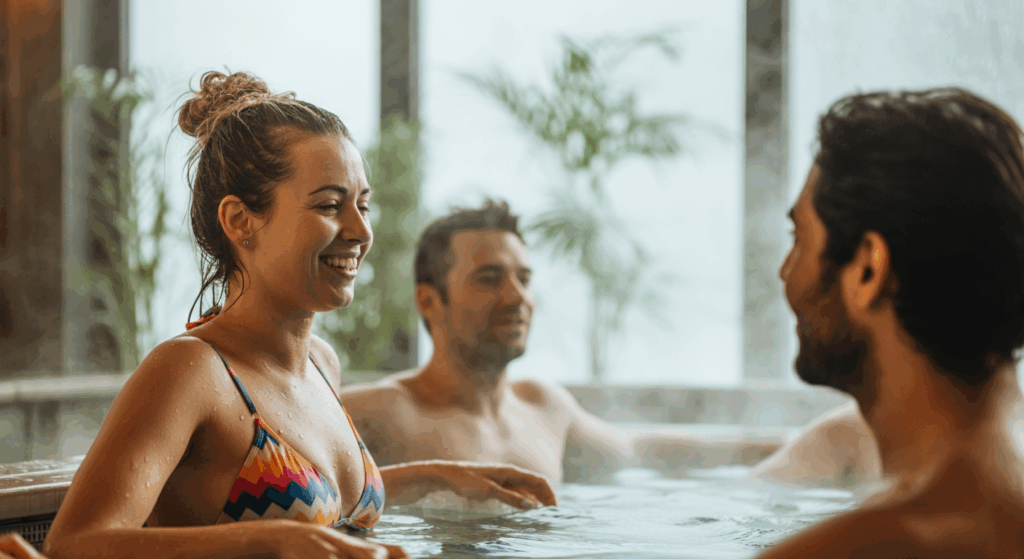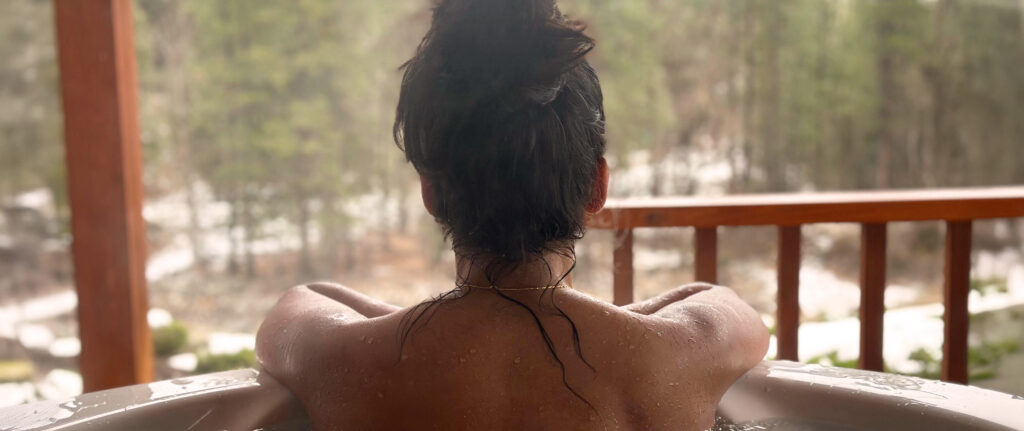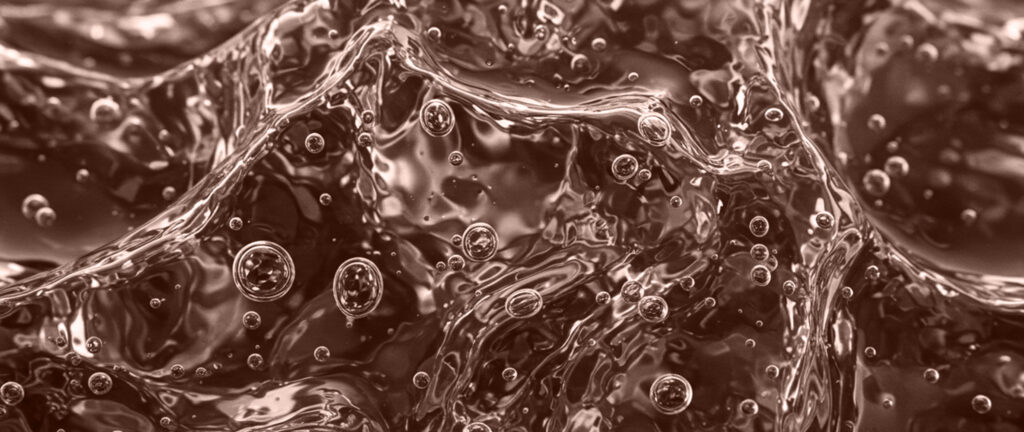If you read our last blog post about hot springs, you know we’re big believers in the healing power of soaking. But there’s another half to the hydrotherapy equation that’s equally invigorating and just as available to us here in Central Oregon: cold water. Really cold water. The kind that jolts your senses awake and reminds you that you are, in fact, very much alive.
At Flux Lounge, we bring the elemental power of hot and cold water into a beautifully designed space. But the roots of contrast therapy are found in nature, and there’s no better place to practice it wild than right here in Bend. Whether you’re taking a mid-summer dip or braving a mid-winter plunge, Central Oregon is full of places where the cold is free-flowing and the vibes are pure.
Here are a few of our favorite wild cold plunge spots near Bend:
Deschutes River (Downtown Bend, Meadow Camp, Dillon Falls, and Beyond)
Let’s start with the obvious one. The Deschutes River is the lifeblood of Bend, and it’s a year-round cold plunge playground. In winter, brave souls break the ice to dunk near First Street Rapids or by the footbridge in Farewell Bend Park. In summer, it’s more accessible but still plenty chilly, especially in the morning.
-
Miller’s Landing – When you’re short on time, this newly renovated riverside park is one of the most convenient spots in town for a quick dip. With thoughtfully designed river access, including ramps and steps, it’s an easy and welcoming place to get in and out of the water. No scrambling required.
Other great Deschutes access points include:
-
Meadow Camp – A quieter, forested section with big boulders and deep pools.
-
Dillon Falls – Dramatic views and a great launch point just downstream of the rapids.
-
Riverbend Park – Popular and social, with easy entry and float traffic in the summer.
-
McKay Park – Less crowded, good for quick plunges and watching the river surfers.
-
First Street Rapids – A classic cold spot; the water here is fast and chilly even in summer.
-
Sawyer Park – A more rugged spot, with alternate entry across the bridge.
Always be cautious of currents and flow rates, especially in shoulder seasons and winter.
East Lake & Paulina Lake (Newberry National Volcanic Monument)
Tucked into a massive caldera, these sister lakes sit at over 6,000 feet elevation, which means the water stays cold long into the summer. East Lake has lava rock beaches and deep, still water. Paulina offers a longer shoreline and easy access near the day-use areas.
Local tip: Try an early morning plunge followed by a short hike to Paulina Falls or a soak in the hidden hot springs along East Lake’s northern edge. It’s nature’s version of contrast therapy.
Hosmer Lake
Hosmer is one of those postcard-perfect spots: crystal clear water, views of Mt. Bachelor, and an air of peaceful remoteness. It’s often known for stand-up paddling or fly fishing, but it’s also a gorgeous place to slip in for a bracing swim. The cold is intense, but the reward is the serene stillness you’ll feel afterward.
Local tip: Go early or on a weekday if you want solitude. There’s no real beach, so bring a towel and be ready to scramble over some logs.
The Cascade Lakes (Sparks, Elk, Devils, and Beyond)
The whole Cascade Lakes Highway is dotted with high-mountain lakes that stay refreshingly cold even on the hottest summer days. Sparks Lake is beloved for its stunning mountain backdrop. Elk Lake has a more social beach scene. Devils Lake is tiny but alpine-clear and shockingly cold. Pick your vibe and plunge accordingly.
Local tip: Late summer is ideal. The water is still cold, but snowmelt has slowed and access is easier. Many of these spots are best reached in the morning before the wind picks up.
Blue Pool (Tamolitch Pool) – !!For Experts Only!!
Located about 60 miles west of Bend in the Willamette National Forest, Blue Pool is one of the most visually stunning and bone-chilling places you can cold plunge. Fed by snowmelt filtered through underground lava tubes, it stays around 37 to 40 degrees Fahrenheit year-round. The water is so clear it looks shallow, until you realize it’s over 30 feet deep.
This spot is not for the faint of heart. Access requires a 4.2-mile hike, and entering the pool is challenging and potentially dangerous. Cold shock, slippery rocks, and underwater hazards make it a place for experienced plungers only. Cliff jumping is strongly discouraged.
Plunge Mindfully
As with all wild water adventures, safety comes first. Scout your spot, watch for currents, and don’t go alone unless you’re experienced. Cold water shock is real. Even in the heat of summer, mountain lakes can surprise you with how quickly they drain your energy. Step in with intention, breathe through the discomfort, and know your limits.
And when you’re ready to warm up, we’ll be here. Hot tub steaming, tea brewing, and the community waiting.
Join the Conversation
Want to share your cold plunge experience? Tag us on social @fluxloungebend and use #ColdPlunge #ContrastTherapy #HotColdImmersion #WellnessJourney #Recovery #BendOregon #FluxLounge.



